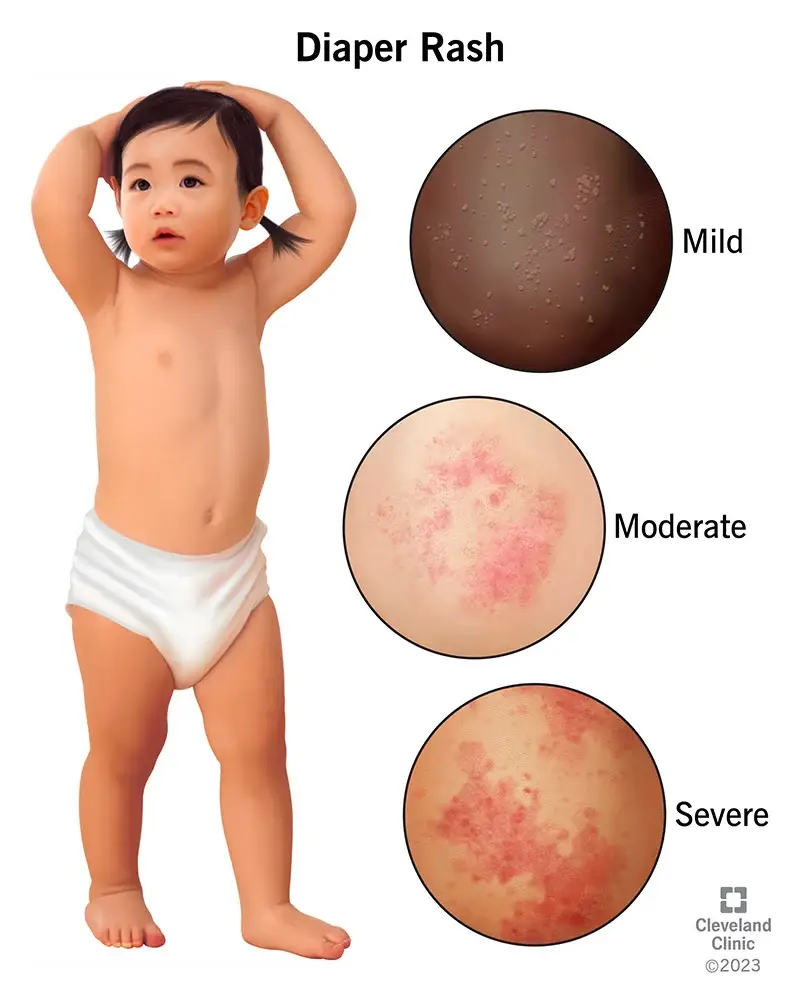As parents, ensuring our little ones’ comfort and well-being is of utmost importance. However, one common challenge that many babies face is the dreaded diaper rash. Diaper rash can cause discomfort and distress for both babies and parents alike. In this article, we will delve into the various causes of diaper rash, helping you identify potential triggers and providing insights on how to prevent and treat this common ailment. So, let’s uncover the mysteries behind diaper rash and empower you to keep your baby happy and rash-free!
- Friction and Irritation: One of the primary causes of diaper rash is friction and irritation. The constant rubbing of the diaper against your baby’s delicate skin can lead to redness, inflammation, and discomfort. Additionally, wet or soiled diapers left on for prolonged periods can further exacerbate the problem. It is essential to change your baby’s diaper frequently and ensure a snug but not overly tight fit to minimize friction.
- Moisture and Dampness: Moisture and dampness create an ideal environment for diaper rash to flourish. When a baby’s skin is continuously exposed to urine or feces, it can weaken the skin barrier, making it more susceptible to irritation. To combat this, it is crucial to change wet or soiled diapers promptly and to consider using diapers with excellent absorbency to keep the skin as dry as possible.
- Allergic Reactions: Certain babies may have sensitive skin that reacts to the chemicals present in diapers, wipes, or other baby care products. Fragrances, dyes, and other additives can trigger an allergic reaction, resulting in diaper rash. If you suspect your baby has sensitive skin, opt for fragrance-free, hypoallergenic products, and consider switching to cloth diapers as they provide a more natural and breathable option.
- Yeast Infections: Yeast infections, such as candidiasis, are another common cause of diaper rash. The warm, moist environment created by a diaper provides an ideal breeding ground for yeast to thrive. This type of rash is often characterized by bright red spots, raised bumps, or even blisters. If you suspect a yeast infection, consult your pediatrician who may recommend antifungal creams or medications to alleviate the symptoms.
- Introduction of Solid Foods: When your baby begins eating solid foods, their bowel movements may change in consistency and acidity, leading to increased risk of diaper rash. The introduction of new foods can cause diaper rash due to the change in pH levels and potential allergic reactions to certain foods. It is advisable to introduce new foods gradually and observe any adverse reactions that may contribute to diaper rash.
Prevention and Treatment:
- Keep the diaper area clean and dry: Change diapers frequently, clean the area gently with mild, fragrance-free wipes or lukewarm water, and pat dry with a soft towel.
- Use barrier creams: Apply a thin layer of diaper cream containing zinc oxide or petroleum jelly to create a protective barrier between your baby’s skin and the diaper.
- Opt for breathable diapers: Consider using diapers made from breathable materials that allow air circulation and reduce moisture buildup.
- Avoid tight-fitting clothes: Dress your baby in loose-fitting, breathable clothing to reduce friction and irritation.
- Seek medical advice: If the diaper rash persists or worsens despite preventive measures, consult your pediatrician for a proper diagnosis and guidance on treatment options.
Conclusion:
Diaper rash can be a common occurrence, but armed with knowledge about its causes and prevention, you can take proactive steps to keep your baby comfortable and rash-free. By maintaining good diaper hygiene, using gentle products, and being mindful of potential triggers, you can minimize the likelihood of diaper rash and ensure your little one’s skin stays healthy and happy. Remember, each baby is unique, so it may take some trial and error to find the right routine and products that work best for your child. Learn more


